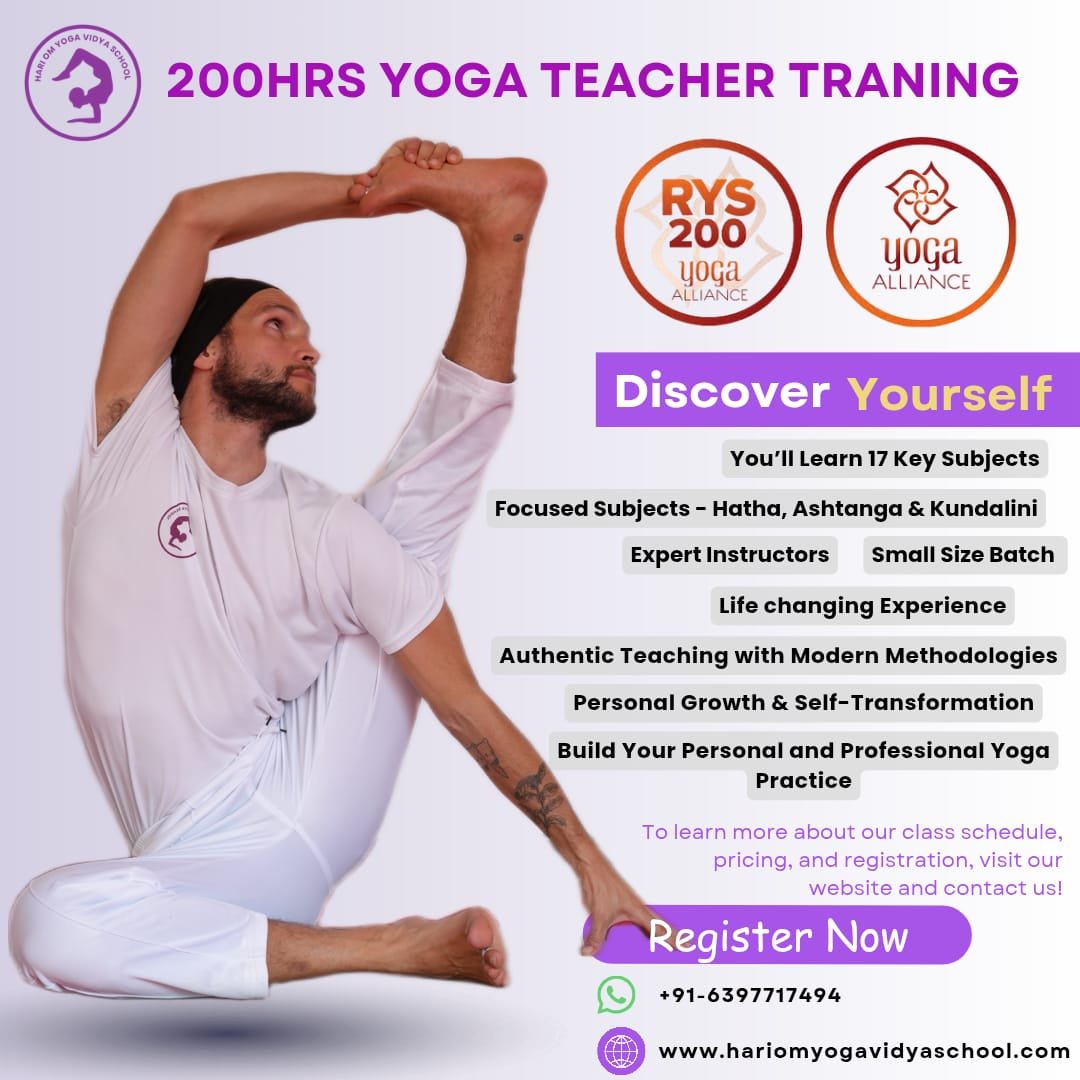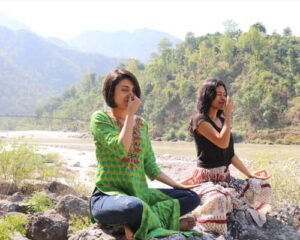Part -2/3 – 8 Limbs of Yoga as Royal Path by Mahararishi Patanjali – Asana, Pranayama & Pratyahara
According to Patanjali’s Yoga Sutras, there are eight-limbs that comprise yoga. Each offers guidance to the yoga practitioner, to live a purposeful and meaningful life. The 8 limbs of yoga are basically a series of practices. And, they ultimately point towards one single goal. It will make you realize the reason for your existence, in the true sense of the word. Each one of these limbs, provide guidance in different areas of life. The yoga center in Rishikesh will help you to transition from one state to another, quite seamlessly.
If you are a practitioner of yoga, you will be expected to perfect the lower limbs of yoga, before proceeding further. The process is very seamless and organic in nature. The first two limbs of yoga, Yama and Niyama, which you may have already gone through, describes the basic attitudes towards life. The next three limbs called asana, pranayama, and pratyahara form the basic foundation for meditation practice. When you master these three limbs, you enter a deep meditative state. The limbs have been named according to the Sanskrit scriptures. However, the English terms are as meaningful.
Read More: Why Is Kundalini Yoga Dangerous? The Truth About Its Risks and Rewards
You will hear the term, posture associated with asana. Pranayama are the breathing techniques, whereas Pratyahara is sense withdrawal. Let us learn about each one of them, one by one, and practice the same at the best yoga center in Rishikesh.
Asana
The fitness aspect or physical aspect is mostly connected with asana. It is the third step, on the path to freedom. The word ‘asana’ does not just mean or refer to the ability to do head stands or splits. It does not mean how good you are at contorting your body. It means, the seat or the position, that you will actually take for meditation purpose. Patanjali in Yoga Sutras, has given the instructions ‘sthira sukham asanam’. The position, that you take while meditating must be stable and comfortable.
Traditional texts like Hatha Yoga, lay a lot of importance on physical postures. Take, for example, Padmasana, and Virasana. The traditional texts further say, that the best posture is the one, in which you are most comfortable. It is called ‘sthirasukhasana’. You should be able to sit in a proper posture, devoid of any muscle pulls, aches, or pains. Moreover, you should not feel restless, while doing the pose. This lesson, will definitely stop
you from exerting excess pressure on your body. You will learn about asanas in complete detail, when you head for yoga at Rishikesh.
Pranayama
It is the fourth limb, which many people also refer to as ‘life force’. It is the very essence of life, which keeps us alive. It also points towards the energy that surrounds us. You will hear the word ‘Prana’ quite often, during the practice of Yoga and Pranayama. It is the life force, which flows through the nadis or channels. You will be more bewildered to know, that Pranayama can mean two opposite things.
- It can be broken up into Prana and Yama. It means restraint of breath.
- You can also break it up as Prana and Ayama, which means freedom of breath. Amazingly, this mundane act of breathing can bring about huge changes in the mind, and body. You can choose some of the calming practices, like Chandra Bheda, or Moon piercing breath, or more stimulating practices such as Kapal Bhati. It means skull shining. The myriad manners in which you breathe, can change the very state of existence. You can either consider it as controlling in nature or freeing in nature. It is totally up to you, how you see it. Once you enroll for the yoga training in Rishikesh, you will understand what it encompasses.
Pratyahara
‘Pratya’ means to ‘withdraw’. It can also mean, ‘to draw back’. ‘Ahara’ refers to anything, that we take in. It can be the sights around you, the noises, or just about anything that you draw in. You may also be focussing on breathing inwards. Additionally, you could be soaking the external ambience while meditating. Thus, you can say that this fifth limb directly relates to the fourth limb, which is called Pranayama.
The word ‘withdrawal’ could conjure up various different kinds of images. It can actually mean, switching off all your senses. It requires a lot of concentration to do so. So, you will often find many beginner level practitioners getting confused. However, the best yoga teacher training in Rishikesh will help you to understand it and also practice it, to reach the ultimate goal of Kaivalya.
For the unversed, or those beginners, who fear losing their sense of taste, sight, hearing, feeling, or tasting, it is not really a physical connotation. Withdrawal from the senses, mean that you reach a certain stage in your practice, when you are so focussed, that these external things do not matter any longer. More experienced practitioners experience this each and every day.
You should also know, that there are two types of Pratyahara. Natural Pratyahara and Yogic Pratyahara. In natural pratyahara, the result is due to activities like rest, sleep, and relaxation. While in the latter, it is it comes due to the practice of yoga. Sleep is a great example of pratyahara. Sleep is where the soul loves to rest as well as recharge. In this state, all the other senses are silent. You can practice pratyahara, by cutting off from the
outside world. You can take a short walk in the woods, and feel it happening. It may also mean the avoidance of harmful habits, like watching TV, listening to loud music, and dependency on addictions.
Yogic pratyahara on the other hand, forms a bridge between the physical aspects like yoga, postures, and meditation. It mainly includes calming postures, breath control, and many types of mindful meditation. You can take the example of savasana. In this pose, you withdraw all your senses, like sight, hearing, vision, touch and smell. You lie like a corpse. You can join this journey, from the outer koshas of the body to the inner ones, through the subtle practice of the eight limbs. Read on, to know more about the remaining and last three.
Read More: Everything You Need to Know About Kundalini Yoga Teacher Training
Deepen Your Yoga Practice with Hari Om Yoga Vidya School
Located in the heart of Rishikesh, Hari Om Yoga Vidya School is a place where ancient yogic wisdom meets modern teaching techniques. As a top yoga school in Rishikesh, we are committed to providing authentic, immersive yoga education in a peaceful, spiritual setting. Recognized as one of the best yoga schools in Rishikesh, we offer structured training programs designed to help you evolve in your practice, whether you are a beginner or an experienced yogi.
If you’re searching for a yoga school in Rishikesh that focuses on holistic learning, experienced teachers, and a supportive community, look no further!
Explore Our Yoga Teacher Training & Retreats
At Hari Om Yoga Vidya School, we offer a range of courses tailored for different levels of practitioners:
✅ 100-Hour Yoga Teacher Training in Rishikesh – A foundational course for those looking to begin their yoga journey.
✅ 200-Hour Yoga Teacher Training in Rishikesh – An internationally recognized certification for aspiring yoga teachers.
✅ 300-Hour Yoga Teacher Training in Rishikesh – Advanced training to deepen your practice and refine your teaching skills.
✅ 7-Day Yoga Retreat in Rishikesh – A rejuvenating escape into yoga, meditation, and self-discovery.
✅ 10-Day Yoga Retreats in Rishikesh – A transformative experience that blends yoga, relaxation, and Himalayan serenity.
Join us for a life-changing experience and become part of our global yoga family! 🌿✨






